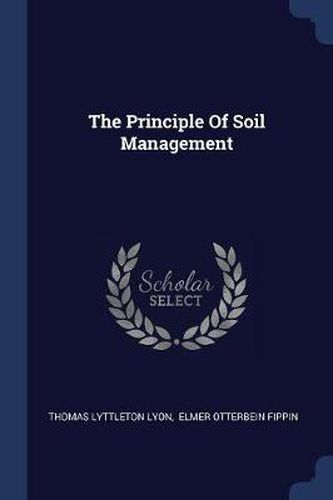Readings Newsletter
Become a Readings Member to make your shopping experience even easier.
Sign in or sign up for free!
You’re not far away from qualifying for FREE standard shipping within Australia
You’ve qualified for FREE standard shipping within Australia
The cart is loading…






This historic book may have numerous typos and missing text. Purchasers can download a free scanned copy of the original book (without typos) from the publisher. Not indexed. Not illustrated. 1914 Excerpt: … a much greater retention of nitrates by the clay soil, as shown by a comparison of the fertilized and unfertilized plats on both soils. Schulze extracted a rich soil by slowly leaching 1,000 grams with pure water, so that one liter passed through in twenty-four hours. The extract for each twenty-four hours was analyzed every day for a period of six days. The total amounts dissolved during each period were as follows: Table XLII It will be noticed that the dissolved matter, both organic and inorganic, fell off markedly after the first extraction, which was larger on account of the matter in solution in the soil water. Later extractions were doubtless supplied largely from the substances held by absorption and which gradually diffuse into the water extract, as the tendency to maintain equilibrium of the solution overcomes the absorptive action. With the removal of the adsorbed substances, the equilibrium between the soil particles and the surrounding solution is disturbed, solvent action is increased, and more material gradually passes from the soil into the solution. In this way the uniform and continuous body of extractives is maintained. 142. Other factors.–For purposes of soil analysis, the quantity of water used for extraction must be placed at some arbitrary figure, and the method is open to the objection that it does not represent accurately the soil water solution. Analyses of soils of different types are not comparable, and the water extract cannot be considered to measure the concentration or even the composition of the solution existing between the root hair and the soil particles. However, for studying some of the changes that go on in the soil, and which are detectable in the soil-water solution, the method may be used to advantage. HI. MINERAL…
$9.00 standard shipping within Australia
FREE standard shipping within Australia for orders over $100.00
Express & International shipping calculated at checkout
This historic book may have numerous typos and missing text. Purchasers can download a free scanned copy of the original book (without typos) from the publisher. Not indexed. Not illustrated. 1914 Excerpt: … a much greater retention of nitrates by the clay soil, as shown by a comparison of the fertilized and unfertilized plats on both soils. Schulze extracted a rich soil by slowly leaching 1,000 grams with pure water, so that one liter passed through in twenty-four hours. The extract for each twenty-four hours was analyzed every day for a period of six days. The total amounts dissolved during each period were as follows: Table XLII It will be noticed that the dissolved matter, both organic and inorganic, fell off markedly after the first extraction, which was larger on account of the matter in solution in the soil water. Later extractions were doubtless supplied largely from the substances held by absorption and which gradually diffuse into the water extract, as the tendency to maintain equilibrium of the solution overcomes the absorptive action. With the removal of the adsorbed substances, the equilibrium between the soil particles and the surrounding solution is disturbed, solvent action is increased, and more material gradually passes from the soil into the solution. In this way the uniform and continuous body of extractives is maintained. 142. Other factors.–For purposes of soil analysis, the quantity of water used for extraction must be placed at some arbitrary figure, and the method is open to the objection that it does not represent accurately the soil water solution. Analyses of soils of different types are not comparable, and the water extract cannot be considered to measure the concentration or even the composition of the solution existing between the root hair and the soil particles. However, for studying some of the changes that go on in the soil, and which are detectable in the soil-water solution, the method may be used to advantage. HI. MINERAL…